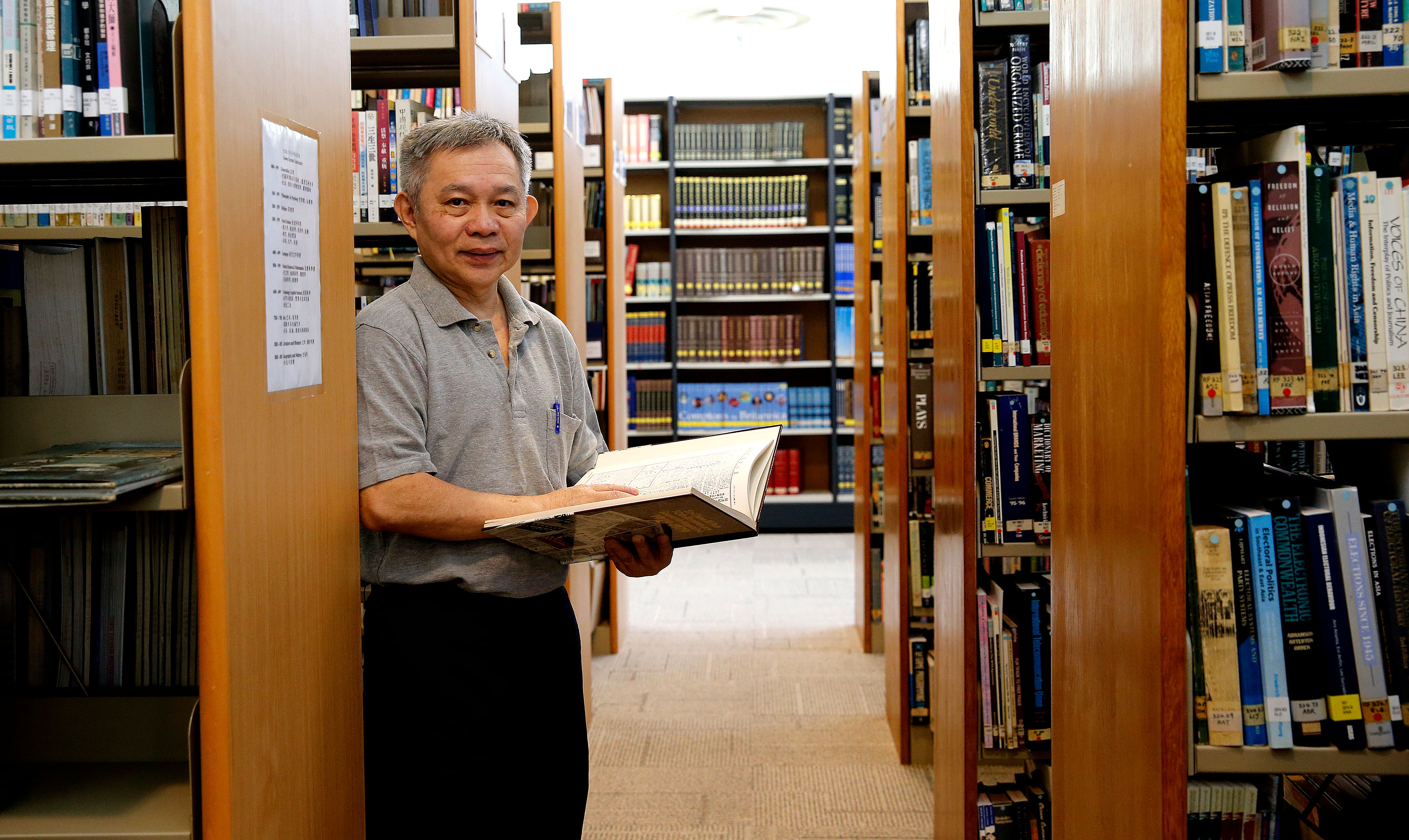This is the fifth part of the Save & Invest Portfolio Series, where we highlight the performance of three simulated portfolios.
The gain registered by all three portfolios last month is testament to diversification being key to achieving investment success.
It reinforces what research has consistently shown - that the bulk of investment returns are achieved from prudent asset allocation and not market timing. The three portfolios have been designed by CFA Society Singapore (CFAS) with these principles in mind.
The Sunday Times Invest introduced this series at the start of the year to feature simulated portfolios of three real retail investors.
The investors are 25-year-old Shona Chee, a technical account manager, entrepreneur Getty Goh, 38, who is married with two young children, and retiree Wang Moo Kee, 61.

The Portfolio Series does not involve actual money as it is intended only for illustration and education.
All three portfolios are limited to instruments listed on the Singapore Exchange (SGX) to keep them easy to monitor, simple and accessible, as well as the Singapore Savings Bonds, which can be bought via automated teller machines.
The main asset classes are domestic equities, real estate investment trusts (Reits), global exchange-traded funds (ETFs) and bonds.
There are similarities in the three portfolio holdings, but the allocation for each profile differs, depending on the individual's risk-return objectives and preferences. The simulated portfolios are constructed for an ideal investment time horizon of five to 10 years.

The three portfolios, which went live on Jan 18, are being tracked each month until early next year.
Portfolio performance
All three portfolios registered gains in March, although they all trailed the sharp recovery in the custom benchmarks. This is partly because the March rally was broad-based and the portfolios do not have exposure to all the asset classes that benefited from the rally, such as the emerging market sector.
The domestic equities and global ETFs positions in the three portfolios rallied, albeit less than the underlying benchmarks, while the Reits and bond positions were flat to slightly negative.

The panel explained that in view of global volatility, it had been cautious to allocate any exposure to the emerging market asset class given the sociopolitical and economic troubles of Russia, Brazil and other oil-producing nations.
However, this asset class performed relatively better than developed markets during this period. So in terms of attribution, the portfolios lost out by not being allocated to emerging market equities.
Rebalancing portfolios
Adjustments were made on March 31 to the portfolios on the basis of the changing global landscape and the earnings of local listed firms.
1. Switching OCBC for DBS for all three portfolios

The CFAS panel decided to switch out of OCBC and into DBS for all three portfolios as OCBC has outperformed DBS since inception and DBS is trading at relatively cheaper valuations.
The panel said that of the three local banks, DBS "best reflects a sustainable quality of earnings".
OCBC is trading 9.25 times of its earning and 1.07 times to its book value, with an indicative dividend yield of 4 per cent. By comparison, DBS is trading a lower 8.4 times of its earning and 0.94 times to its book value, with an indicative dividend yield of close to 4 per cent.
The CFAS panel said: "We still have strong conviction on the potential upside for the banking sector due to the rising interest rate environment. DBS has the largest exposure to oil and gas, which could play spoilsport in 2017/18, but current valuations have somewhat taken this into account.

"The CET1 (common equity Tier 1) capital ratio of 12.4 per cent is highest among peers. Other positives include 148 per cent coverage ratio. Thus we have switched out of OCBC and into DBS."
-
Save & Invest Portfolio Series
-
The Save & Invest Portfolio Series features the simulated portfolios of a young working adult, a married couple with two young children, and a retiree over a 12-month period.
It guides retail investors in basic investment techniques and how to build a portfolio in line with their financial goals and risk tolerance. This initiative involves the Singapore Exchange collaborating with CFA Society Singapore and MoneySense, the national financial education programme.
The CET1 ratio gauges a bank's capital strength, while the coverage ratio - including debt service coverage, interest and asset coverage ratios - is a measure of a company's ability to meet its financial obligations. Generally, the higher the coverage ratio, the better the firm's ability to fulfil its obligations to its lenders.
2. Reducing exposure to European ETF for Mr Goh's and Ms Chee's portfolios
The adjustment was made as the panel views more optimism coming from US over Europe. The panel reduced exposure to the European ETF and increased the allocation to the US for Mr Goh. For Ms Chee, the decision was to sell the European ETF completely as it was not possible to trim it further due to the small size of the position.
Before the switch on March 31, Mr Goh's portfolio showed higher exposure to Europe over the US. The panel switched 2 per cent from his European ETF to the US ETF to reflect their preference for US equities over European equities at this juncture.
The panel noted that Europe has delivered one of the weakest earnings seasons in almost a decade.
"The efficacy of the European Central Bank to reassure the markets is waning rapidly and we are fearful of multiple challenges in the euro zone, not the least of which is a prolonged recession. Each round of quantitative easing is producing a progressively weaker impact on the market," said the panel.
At the same time, European corporates are slashing costs in a desperate bid to remain profitable and the top line is shrinking.
Meanwhile, US corporate management has forecast positive US GDP growth this year, dismissing concerns of a potential recession. Companies potentially benefit from positive US consumer spending.
"Wage and job growth, low rates and low oil prices should keep spending power elevated. Several firms have announced large and accelerated share repurchase programmes this year, hence corporates will remain the largest sources of US equity demand," added the CFAS panel.
3. Switching from commodity ETF to gold ETF for Ms Chee's portfolio
The panel also switched out of the Lyxor Non-Energy Commodity ETF in favour of the gold ETF for Ms Chee's portfolio. This reflects the panel's preference for gold as a good diversifier in these volatile market conditions.
Commodities are valuable for their intrinsic value, and demand is determined by their use-value. While commodities other than gold may be stockpiled for their exchange values, there are generally particular circumstances leading to this. Gold, on the other hand, does have use-value in industrial applications, but the bulk of its use-value is in its exchange value.
Portfolio Series seminars As part of the Save & Invest Portfolio Series, there will be six public seminars, jointly hosted by SGX Academy and CFAS, that are aligned with themes featured in the series.
The first seminar, with the theme "Portfolio construction for young investors", was held in February and attracted 350 people.
CFAS panellist Jack Wang highlighted the importance of conducting due diligence and understanding what you are investing for.
He recalled how his maiden stock investing attempt had ended poorly. Mr Wang had put his money in one stock and was happy to sell it within one day when it gained eight cents.
He decided to try to make a gain of eight cents daily but several days later, the stock market crashed and wiped out all his gains. That taught him to avoid concentrated risks and trading daily.
As a defence against overconfidence, he advised that diversification is key. So how many stocks should you include in a portfolio? He said to use the number of your best friends as a general guide.
The number usually falls between five and 20 stocks, otherwise an investor would have no time to read the stock reports, he said.
Another tip is to aim for some income from stock investing like dividend yields although this is not critical for most young investors.
It also helps if your funds are allocated in asset classes that are negatively correlated to one another. For example, bonds help balance the exposure to equities.
Global ETFs are another asset class worth considering as they are "like a low-maintenance" spouse. In addition, global ETFs provide global exposure as well as exposure to certain asset classes like commodities.
Newbies are advised to tread in stocks more conservatively. In the case of Ms Chee, she wanted to protect a portion of her investable sum, which was eventually parked in the risk-free Singapore Savings Bonds.
When it comes to selecting stocks, you should consider the services you would typically engage in such as banks, medical services, the shops you visit and so on, added Mr Wang.
•The second seminar in the Save & Invest Portfolio Series will be for growth-focused investors. It will be held on April 16 from 9.30am to noon at the SGX. To register, visit www.sgx.com/academy. To analyse the financials of SGX-listed firms, you can check out StockFacts (www.sgx.com/stockfacts). Please send your queries on this series to lornatan@sph.com.sg.


